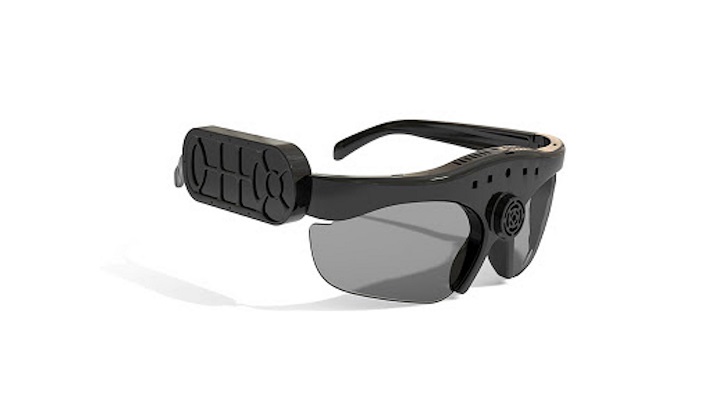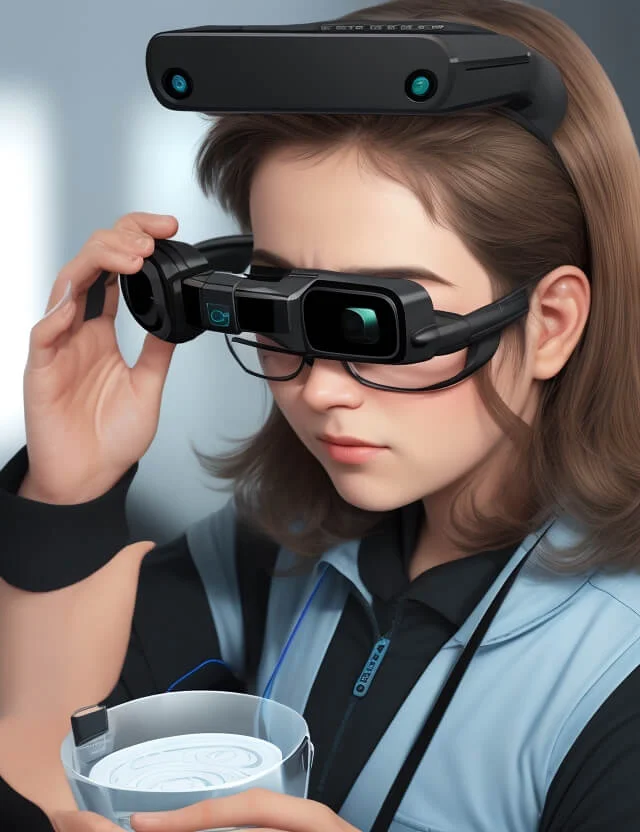Enhancing Ease Of Access Via Assistive Modern Technology for the Blind
The combination of assistive technology for the blind stands for a crucial improvement in ease of access, essentially modifying just how people navigate their settings and involve with society. From display readers to innovative smart walking sticks, these tools not just improve freedom however also advertise inclusivity in various balls of life. As we check out the diverse sorts of assistive gadgets and their concrete effects on everyday living, it comes to be crucial to take a look at exactly how ongoing technical improvements are reshaping the landscape of assistance for the blind community. What implications do these developments hold for the future of availability?
Review of Assistive Innovation
Assistive technology refers to a variety of tools and software program developed to enhance the capacities of individuals with disabilities, including those who are blind or visually impaired. This modern technology plays a crucial duty in advertising self-reliance and improving the high quality of life for customers. By offering different methods for accessing details and executing daily tasks, assistive innovation equips people to browse their environments much more successfully.
The growth and execution of assistive modern technology accept a variety of concepts intended at cultivating accessibility. These concepts consist of user-centered design, which prioritizes the demands and choices of the individual, and the assimilation of modern technology into day-to-day tasks. Such advancements ensure that assistive gadgets are not just functional however additionally instinctive and easy to use.
Additionally, assistive technology incorporates a varied spectrum of options, from low-tech options like magnifiers to modern advancements such as screen visitors and Braille screens. The ongoing evolution of this field is driven by the need to attend to the one-of-a-kind difficulties encountered by people with visual problems (Wearable technology for low vision). As innovation continues to development, the possibility for enhancing ease of access and promoting inclusivity continues to be promising, inevitably adding to an extra equitable society

Sorts Of Assistive Instruments
Numerous types of assistive devices are available to sustain people that are blind or aesthetically impaired, each made to attend to certain demands and obstacles. These tools can be extensively classified into 3 main kinds: low-tech, mid-tech, and modern services.
Low-tech tools consist of products such as magnifiers, Braille labels, and responsive maps. These are relatively simple devices that improve the individual's capability to communicate with their setting without calling for complicated innovation.
Mid-tech gadgets typically involve advanced features, such as digital magnifiers and mobile Braille note-takers. These tools can offer functionalities like speech result, enabling customers to gain access to information more effectively.

Impact on Daily Living
The accessibility of different assistive gadgets significantly boosts the lifestyle for people that are aesthetically impaired or blind, influencing their day-to-day living in profound ways. By incorporating technologies such as screen readers, Braille shows, and audio description services right into their regimens, users gain greater autonomy and self-reliance. These tools promote accessibility to info, allowing people to do daily tasks, such as checking out e-mails, browsing public areas, and appreciating media content.
Additionally, assistive devices encourage people to involve even more completely in social interactions and neighborhood activities. The ability to use smart devices outfitted with ease of access features allows for seamless interaction and my sources link with others. This connectivity promotes a feeling of belonging and reduces feelings of isolation.
In expert setups, assistive technology sustains efficiency by enabling individuals to total work tasks effectively. Tools like voice recognition software program and specialized magnification tools allow individuals to join the labor force on equivalent ground with their sighted peers.

Advancements in Technology
Recent technological innovations have considerably changed the landscape of devices readily available for people who are visually damaged or blind. The integration of artificial intelligence (AI) and artificial intelligence has provided surge to applications that enhance navigation and object recognition. Mobile phone applications can currently use AI to recognize and explain surroundings in real-time, providing customers with beneficial contextual information.
Additionally, developments in haptic technology have actually brought about the growth of smart walking sticks geared up with sensors that detect barriers and give tactile feedback. This empowers customers to browse their atmosphere with increased self-confidence and self-reliance. In read this addition, technologies in text-to-speech software program and braille screens have boosted the access of digital content, permitting seamless interaction with various media.
Wearable technologies, such as wise glasses, are additionally making strides in aiding visual problems. As technology proceeds to evolve, the capacity for also more transformative devices remains on the horizon.
Future Trends and Innovations
As modern technology swiftly advances, the future of assistive tools for people who are blind holds immense promise. Innovations in synthetic intelligence (AI) and artificial intelligence are positioned to revolutionize the means blind individuals communicate with their settings. For circumstances, AI-driven applications are being developed to boost item recognition, permitting individuals to recognize and browse their surroundings with better simplicity and accuracy.
Additionally, developments in haptic feedback modern technology are allowing the production of tactile maps and navigating help that supply real-time information through touch. These technologies not only improve mobility however additionally foster self-reliance. In addition, wearable devices outfitted with augmented truth (AR) attributes are emerging, using customers visual info via audio descriptions, therefore bridging the space in between the physical and digital worlds.
Furthermore, the integration of wise home technology presents brand-new chances for accessibility, enabling people to control their living atmospheres with voice commands or smart device applications. As cooperation in between technology developers and the blind community continues, see post the focus on user-centered style will certainly ensure that future developments are customized to fulfill the unique needs of this population (Wearable technology for low vision). The trajectory of assistive innovation guarantees a much more comprehensive and empowering future for people that are blind
Verdict
In conclusion, assistive modern technology plays an essential role in improving accessibility for people with visual impairments. Continual innovations in innovation and user-centered design make certain that these tools provide successfully to the unique needs of the blind area.
The combination of assistive technology for the blind stands for a critical advancement in availability, fundamentally altering exactly how people navigate their settings and engage with culture.Assistive technology refers to an array of devices and software created to enhance the abilities of people with impairments, consisting of those who are aesthetically impaired or blind. Wearable technology for low vision.As innovation swiftly progresses, the future of assistive tools for people who are blind holds enormous promise. The trajectory of assistive modern technology promises a much more comprehensive and empowering future for individuals that are blind
In verdict, assistive technology plays an important duty in enhancing ease of access for people with aesthetic impairments.